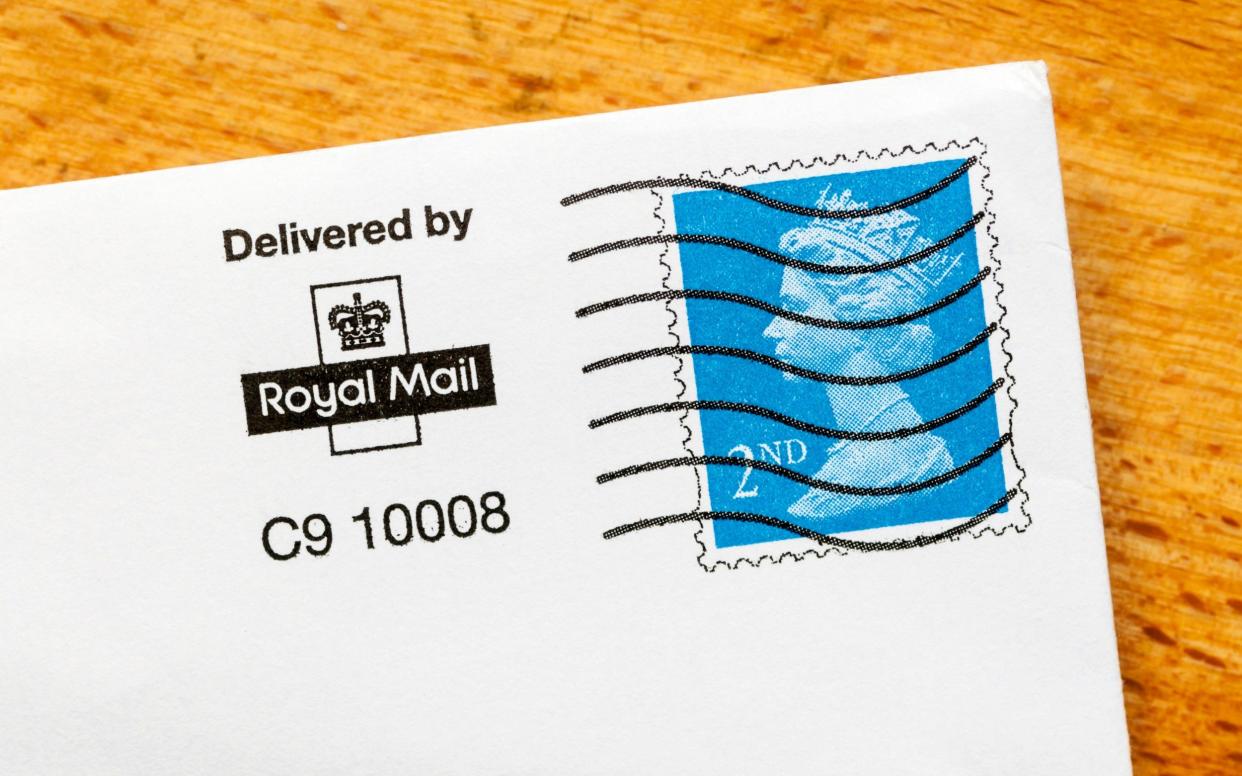Our machines can mistake genuine stamps for fakes, Royal Mail executive admits

Genuine stamps have been wrongly flagged as potentially fraudulent, a Royal Mail executive has said.
The postal service’s machines are not always able to scan new barcodes correctly, meaning some genuine stamps have been mistakenly labelled as suspicious, the source told The Telegraph.
Since barcoded stamps became mandatory last July, a spate of customers have complained after being charged £5 to collect post because Royal Mail has deemed the stamps on them to be counterfeit.
The source said they knew of only a “handful” of cases where members of the public have been incorrectly surcharged, adding the final decision was always made by a human expert who “really rarely” makes the wrong decision.
But the senior executive said a scourge of counterfeit stamps flooding Britain from China was making it harder for Royal Mail’s revenue protection team to spot the difference between a genuine and fraudulent stamp.
Earlier this week, an investigation by The Telegraph revealed that four major Chinese suppliers were offering to print up to one million counterfeit Royal Mail stamps a week for as little as 4p each – and deliver them to Britain within days.
Security experts warned that the mass production of fakes was a form of “economic warfare” committed with the “tacit approval” of the Chinese Communist Party.
It led to a diplomatic row erupting on Thursday as senior MPs called for Chinese government officials to face ministers while the Communist nation dismissed the claims as “baseless” – and said Royal Mail should investigate its own supply chains.
An executive at Royal Mail said: “When letters arrive at the mail centre, they all go through the system and the barcode is read. If the barcode comes up as suspicious it is rejected and goes into a separate channel for further checks.
“A revenue protection person will then inspect the item using specialist equipment. I know people are naturally suspicious of machines, it’s not all reliant on machines. The machine is the thing which flags the suspicion – it’s a multi-stage check.
“Sometimes we’ll say ‘no the machine is being overly sensitive, actually that stamp is fine’.”
When asked why the machine might be wrongly flagging a legitimate stamp, the executive replied: “I mean who knows, it could be it just didn’t recognise the barcode for some reason.”
They defended the false positives the machine identifies, saying it “works on the basis of it’s better to be safe than sorry” and said it was not the machine that decides whether a customer is surcharged”.
They said: “I want people to have faith...[but] mistakes will happen, I don’t doubt it. But when they do we want to put it right. If we are told somebody has incorrectly labelled it as counterfeit we want to follow up whatever steps are necessary to make sure that doesn’t happen again.”
However, the developments will raise fears postmasters could be wrongly accused of selling fake stamps as customers have claimed they have been accused of using counterfeit stamps despite purchasing them in branches of the Post Office.
Royal Mail launched a review into its barcoded stamps last week which was welcomed by postmasters.
Richard Trinder, the chairman of a campaign group that represents those wrongly convicted in the Horizon IT scandal, said: “It goes without saying that postmasters do not want to have to deal with false accusations about something else.”
The Telegraph also understands that Royal Mail will write to small retailers it supplies warning them against purchasing counterfeit stamps from anybody offering a discount and to share intelligence with the postal service if they are offered stamps from a suspicious source.
This is one way where Royal Mail believes Chinese counterfeit stamps are entering the system.
The postal service’s security team are monitoring “hotspots” of suspicious activity and are aware of particular shops where they believe counterfeits are being sold.
A source said: “We are sending letters to the smaller retailers we are aware of to say to them if you have any concerns, if you are approached by anybody who claims to be able to offer you a discount, share that intelligence with us. We can take appropriate action. We want to give them support so they don’t fall down that rabbit hole.”
Royal Mail has previously defended its checking process.
A spokesman said this month: “We have a robust, multistage process in place for assessing suspect stamps. Our letter processing machines scan, identify and extract counterfeit stamps before they are individually inspected by a skilled member of the team using specialist equipment before any stamp is marked as counterfeit or pre-used.
“Our website provides customers with guidance on how to spot counterfeit or used stamps and we urge customers to report any suspicious stamps to Royal Mail via our website at www.royalmail.com/report-stamp-fraud so that we can investigate.”


